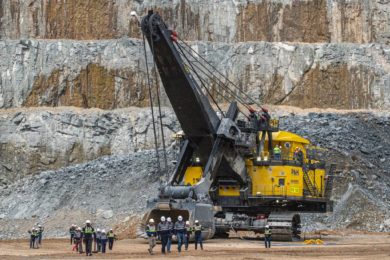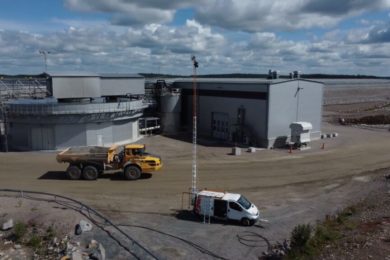Avalon Rare Metals is making good progress on metallurgical process development for the Nechalacho rare earth element (REE) deposit, Thor Lake, NWT, Canada. Following the successful development of a flotation process for producing an REE mineral concentrate in 2009 (company news release of July 20), recent work has focused on a hydrometallurgical process to further upgrade the REE into a chemical concentrate. Avalon has now successfully established a hydrometallurgical process, proven numerous times in the laboratory, for extracting the REE from the mineral concentrates, bringing them into solution so that they can be upgraded by SX and precipitated as a chemical (carbonate) concentrate.
The Basal Zone layer of the Nechalacho deposit contains a high proportion of heavy rare earth elements (HREE, samarium to lutetium including yttrium) hosted in the minerals fergusonite and zircon along with light rare earth elements (LREE, lanthanum to neodymium) hosted in variable amounts of bastnaesite, synchisite, monazite and allanite. Approximately half of the HREE are hosted in fergusonite and half are hosted in zircon. These minerals also contain significant amounts of the rare metals tantalum (Ta), niobium (Nb) and zirconium (Zr) which will also be recovered and converted into saleable products.
Avalon’s metallurgical testwork, directed by expert consultant John R. Goode, P.Eng., has led to development of a flotation process at SGS Minerals Services that successfully concentrates the zircon and fergusonite as well as the LREE mineral phases and associated columbite (a niobium tantalum oxide ore mineral). The flotation process flowsheet has been successfully reproduced by Xstrata Process Services (XPS) in Sudbury, Ontario and Avalon now considers this REE mineral concentration methodology to be firmly established. To date, the flotation mineral separation process results in a concentrate with an average REE, Nb, Ta and Zr recovery of about 80% at a mass pull of 18%. Optimisation work will continue in order to refine the method and produce additional concentrates for hydrometallurgical testing. Pilot plant work on a 5 t bulk sample of the ore is planned for this summer.
After mineral concentrate production, the next step is mineral cracking, which involves breaking down the rare metal bearing minerals. Avalon has tested a number of methods and has settled on a two-stage process of sulphuric acid bake followed by caustic crack of the residue as the most effective method (technically and ecomomically) for this particular suite of REE-bearing minerals. This method results in approximately 90-95% of the rare metals being brought into solution. Avalon has completed numerous experiments at SGS that confirm that the route defined operates effectively and provides the basis for preliminary estimation of capital and operating costs. Further optimisation of the process will continue over the balance of the year.
The process for upgrading the REE, Nb, Ta and Zr from solution will be conventional SX, similar to any other REE/rare metal hydrometallurgical plant. The model being prepared for the prefeasibility study (PFS) presently contemplates production of a mixed REE carbonate containing all of the recovered LREE and HREE, however, Avalon will be continuing to investigate the merits of further separation to isolate the LREE, SEG (samarium, europium & gadolinium) and HREE separately as potential value-added products. The REE would all be produced as carbonates, the Zr as basic sulphate (ZBS), and the Nb and Ta as pentoxide, though other chemical forms are possible. Avalon is currently conducting its SX work at SGS.
The hydrometallurgical plant design work and estimation of capital and operating costs to be used in the PFS are being prepared by Melis Engineering. This is the main information needed to finalise the economic model in the PFS. Avalon is working closely with Scott Wilson Roscoe Postle Associates, its lead technical consultant, to finalise plant design cost estimates so that the PFS can be completed on schedule this spring.
Avalon Rare Metals’ 100%-owned Nechalacho deposit is emerging as one of the largest undeveloped rare earth element resources in the world. Its exceptional enrichment in the more valuable HREE, which are key to enabling advances in green energy technology and other growing high-tech applications, is one of the few potential sources of these critical elements outside of China, currently the source of 95% of world supply. Avalon is well funded, has no debt and its work programs are progressing steadily. Social responsibility and environmental stewardship are corporate cornerstones. Avalon’s performance on community engagement in the north earned it the 2010 PDAC Environmental and Social Responsibility Award. www.avalonraremetals.com









